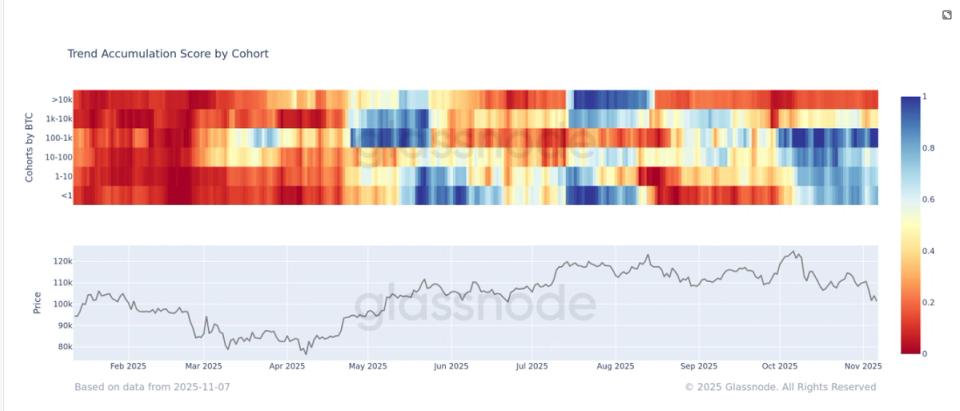Bitcoin remains only slightly positive year-to-date, suggesting that 2025 has been a period of consolidation as the asset stabilizes around the $100,000 level.
According to on-chain data, much of the recent price weakness appears linked to the re-entry into circulation of previously dormant coins.
Large holders, commonly referred to as whales, have been the primary distributors, driving the current downward pressure on prices, according to Glassnode’s The Accumulation Trend Score (ATS).
ATS measures the relative accumulation or distribution behavior between different cohorts of wallets, taking into account both the size of entities and the volume of coins they have acquired in the last 15 days.
- A value close to 1 suggests that participants in this cohort are actively accumulating.
- A value close to 0 indicates that they distribute assets.
- Exchanges, miners and certain other entities are excluded from the calculation.
Whales holding more than 10,000 BTC have been consistent sellers since August, marking three months of sustained distribution. Meanwhile, wallets between 1,000 and 10,000 BTC remain neutral around a score of 0.5, while all smaller cohorts (below 1,000 BTC) are firmly in accumulation mode, according to Glassnode data.
While in the first four months of the year, all cohorts were in deep distribution, which contributed to bitcoin’s 30% drop to $76,000 in April during the so-called pricing crisis.
This data highlights a clear divide between whales and the rest of the market participants and for now, it appears that whales are still leading price action.




